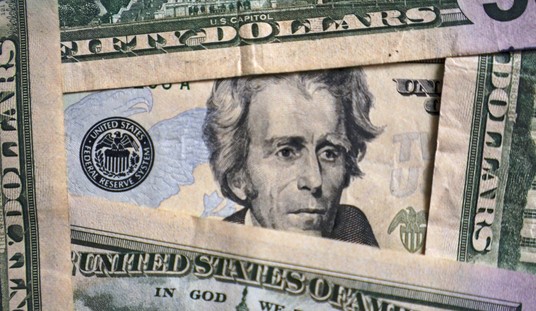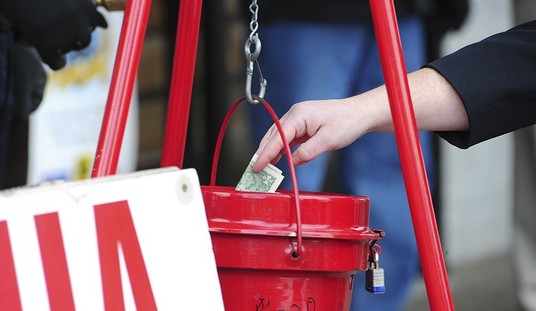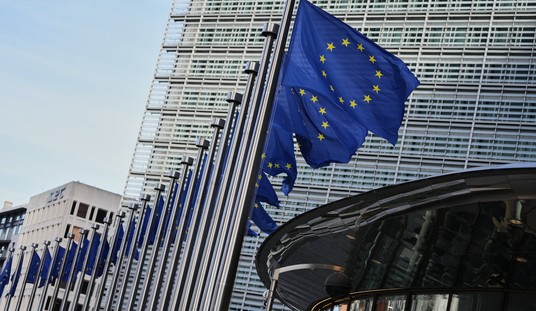Remember Beano? It was an over-the-counter pill one could take right before ingesting a pound of chili con carne or a half-dozen enchiladas, and would (supposedly) prevent any embarrassing gaseous emissions or borborygmi afterwards. I have no idea if it worked or not; "Better out than in" has always been my philosophy in such matters. I am a biologist, after all, unlike a certain Supreme Court justice I could name, and so understand that many things in nature happen for a reason.
Now, it should come as no surprise to most folks that other mammals exhibit this same phenomenon. If you've ever had a dog, you know what I mean. In fact, that's one of the best reasons to have a dog; you have someone to blame for that inevitable consequence.
Cattle, as you might imagine by noting their size and diet of roughage, have this problem, too. But climate scolds are worried; these gases emitted by humans, dogs, and cattle consist largely of methane, and methane is a greenhouse gas, about which we are supposed to be in a full-bore panic. So in the UK and Denmark, they are giving dairy cattle a new drug, like Beano, only rather more so. It's called Bovaer. The Daily Sceptic's David Turver has that story.
Late last year, Arla Foods began a trial of Bovaer in 30 farms across the country. At the time, according to BBC Very Iffy, the company claimed the additive could reduce methane emissions from cows by 30-45%. News of the trial caused consternation among some and led to a boycott of some Arla products. The manufacturer of Bovaer, DSM-Firmenich said these people were the subject of mistruths and misinformation and the product was “totally safe” for use.
Meanwhile, Bovaer was mandated to use across Denmark in early October this year and there have been many reports that the additive is damaging to livestock, prompting an investigation by the Danish government. By pure coincidence, Arla announced in early November it had stopped the British trial and was evaluating the results.
Turns out Denmark was a little hasty. Bovaer, a name which is just a tad too clever, was - of course - done in the name of Net Zero. What's wrong with this idea is that the people pushing this notion don't seem to understand how the carbon cycle works. Cattle, yes, emit methane (CH4). Methane degrades in the atmosphere, turning into carbon dioxide (CO2). Now, before anyone rushes to say "CO2 bad too!" we should note that CO2 is, in turn, taken in by plants, and through the wonders of the various kinds of photosynthesis, is taken in by plants, which produce sugars and carbohydrates from CO2 and other trace minerals and so forth, powered by sunlight.
Animals, like cows, then eat the plants, starting the cycle over. But some carbon remains sequestered in the soil. The end result? Negligible. And CO2, once again, is good for plants, which are then good for animals in turn. Nature is replete with these kinds of self-correcting cycles.
Read More: CO2 Is Greening the Earth, and That's a Good Thing
Here Are Some Ideas on Making Your Diet Climate-Friendly. Problem: They're Hot Garbage.
And here's the thing: In North America, cattle aren't even on the top five list of methane producers. Wetlands are the top natural source of methane, and nobody seems inclined to start draining more marshes and swamps.
But the real problem with this bovine Beano is economic. Bovaer has a nasty effect on milk output, which is, after all, the primary reason to keep dairy cattle.
Back in 2024, the Danish Centre for Food and Agriculture produced a paper setting out the impact of Bovaer on methane emissions and milk productivity.
The paper documented five experiments on Danish cow herds. The reporting of the results is not quite consistent, with some focusing just on methane reduction and others also including the impact on Energy Corrected Milk Yield (ECM)
Both Johnson experiments showed reductions in methane emissions of about a third, with corresponding reductions in ECM of a similar magnitude. The Kjeldsen experiment reduced methane emissions by nearly a quarter but was silent on the impact on milk yields. The first Maigaard paper showed an 18-23% reduction in methane emissions and simply recorded an unquantified negative impact on milk yields. The second Maigaard paper showed a reduction of between 31% and 34% in methane yield and zero to 5% reduction in ECM depending upon Bovaer dosage. It is noteworthy that none of the experiments got anywhere near the high-end 45% reduction in methane emissions claimed by DSM-Firmenich.
Another meta-study by Pupo et al. concluded that 3-nitrooxypropanol (3-NOP), the active ingredient of Bovaer, reduced methane emissions by 27.9% but a dairy with 1,000 cows would need to be compensated by $128,320 per year to cover the cost of the additive and loss of milk yield.
In other words, yes, Bovaer worked to reduce cow flatulence. It also reduced the output of those animals in terms of dairy products. Farmers, to break even, would have to be subsidized to the tune of six figures, or they would have to ramp up their herds, negating any advantage from the drug.
Now, bear in mind the solution that many climate scolds would suggest: We don't need to be eating beef or cheese, or drinking milk, anyway. We've already seen these groups pushing for plant-heavy or outright vegan diets to deal with the climate crisis-that-isn't. The failure of Bovaer will just encourage this.
This was a bad idea from the start. Denmark clearly rushed in where dairy farmers feared to tread, and it's to the UK's credit that the whole idea was dropped after testing. But this was just one more stupid idea done in the name of climate panic, one that never should have seen the light of day. And the one thing we can be sure of is that the climate scolds will learn nothing from it.














